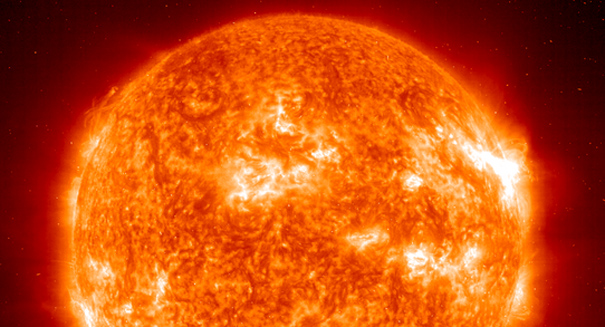
The largest solar flares ever recorded were produced by a young binary system called DG CVn, two young red dwarf stars that were not previously thought to be capable of producing such strong and hot stellar emissions.
Previous scientific theories held that red dwarf stars could only produce major flares for a day. But on April 23, NASA detected the most powerful stellar flares ever recorded from a close red dwarf star. This enormous stellar explosion was over 10,000 times stronger than any previous solar flare on record.
The flare’s temperature reached 360 million degrees Fahrenheit, 12 times hotter than the sun’s boiling center. In addition to breaking records for strength, it also measured as the hottest solar flare ever detected. The flare’s temperature and strength were measured by NASA’s Swift satellite.
According to Stephen Drake, a research at the NASA Goddard Space Flight Center in Greenbelt, MD, “We used to think major flaring episodes from red dwarfs lasted no more than a day, but Swift detected at least seven powerful eruptions over a period of about two weeks. This was a very complex event.”
The flare erupted from a star in the nearby system of DG Canum Venaticorum (DG CVn), which is roughly 60 light years away from Earth. The system consists of two red dwarf stars about one-third the size of Earth’s sun. Swift was unable to detect exactly which of the dwarf stars erupted.
NASA hadn’t previously studied DG CVn because of previously held theories that red dwarf stars could not produce massive solar flares. The results came as a complete surprise to both NASA and the Space Telescope Science Institute in Baltimore, MD. Research Rachel Osten of the Baltimore facility commented, “We had no idea DG CVn had this in it.”
While a majority of the stars within 100 light years are middle-aged, like Earth’s sun, there are about a thousand young red dwarf stars that are capable of emitting youthful bursts of stellar activity. Researchers estimate that DG CVn is 30 million years old, which makes it an extremely young member of the solar system.
Leave a Reply